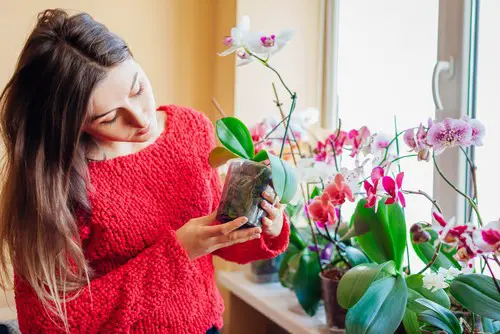Orchids are beautiful plants with showy blooms. With proper care, these plants can brighten any indoor space. Healthy orchids have stiff, green leaves. Brown orchid leaves can indicate an issue with the plant.
Orchid leaves turning brown is due to factors like dehydration, disease, pests, too much sun or cold exposure, and nutrient or fertilizer imbalances. In order to maintain the health of the orchid plant, it is important to monitor leaves for problems and take the necessary steps to fix any issues.
One key factor in preventing orchid leaves from turning brown is proper watering. Overwatering or underwatering can both lead to browning leaves, so it is important to find the right balance and pay attention to the moisture levels in the orchid’s potting mix.
Read on to learn more reasons why your orchid leaves are turning brown and how to remedy this issue to ensure a long, healthy life for your orchid.
See similar posts:
Orchid Leaves Turning Brown: Reasons and Remedies
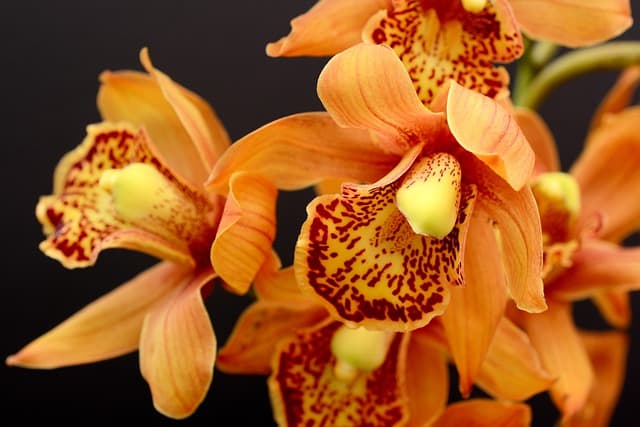
1.Orchid is dehydrated
An orchid that is not getting the proper amount of water may have brown leaf tips. If left further untended, the rest of the leaf will wither, turn brown and fall off. Some other symptoms of a dehydrated orchid include: dry potting mix, yellow limp leaves, slow growth, wrinkled leaves, shriveled aerial roots, and/or curling leaves.
Sometimes this can be remedied with increased watering (two or three times a week) for a time until the leaves seem to have recovered. Orchids love humidity and should be misted regularly. If you live in a very dry climate, consider purchasing a humidifier to help maintain the right level of humidity.
However, some orchids are dehydrated due to problems with the root system. Because orchids are native to humid environments, it is very easy to overwater them.
This can cause rotted roots that make it difficult for the plant to use the water effectively. Dead or rotting roots should be removed from the orchid plant as soon as possible.
2. Water quality
Orchids can be picky about water quality. Hard water, well water, or water with excess amounts of chlorine, salt, or fluoride can turn leaves brown.
Other parts of the plant may be damaged as well, like the margins, stems, or tips. Using filtered or rainwater is the best solution. Excessively chlorinated water can be left in an open container outside to help the chlorine off-gas b3fore being used to water orchid plants.
3. Orchid has a Fungal or Bacterial Infection/Disease
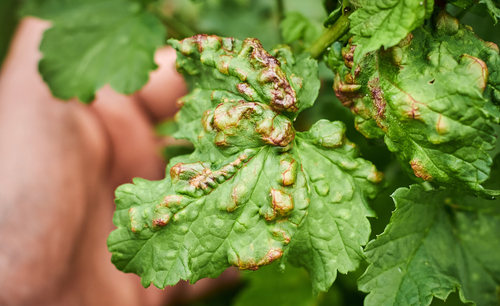
Inconsistent watering and overly wet soil conditions can make the orchid more susceptible to infection or disease from a variety of bacteria and fungal microbes. These infections weaken the orchid and usually create root rot as well.
These infections can look slightly different. For example, large brown spots on orchid leaves are indicative of bacterial infections from watering sitting on leaves for too long. Fungal infections, on the other hand, usually have small ringed spots. These spots may first show up as yellow and darken over time.
A well-draining soil with bark and moss make an ideal growing medium for orchids and will improve aeration around the orchid roots, helping the plant stave off infections and pests. Fungicide can be used to treat recurring or stubborn infections.
4. Orchid has Sunburn
Overexposure to bright, direct, and full sun can burn orchid leaves. In their natural habitat, orchids generally grow best in indirect sunlight as they are usually shaded by trees and other large plants. A sunburnt orchid leaf may first appear as a yellow color that fades to white and turns brittle and dark over extended time.
If your orchid leaves have crispy leaf tips and several splotches of white or yellow, the orchid is getting too much sun and should be moved away to a shadier place indoors. Orchids can also become scorched by heated air, so be sure to keep the orchid away from heater vents to prevent further damage.
Unfortunately, once an orchid leaf has been scorched, it cannot be repaired. However, as long as the orchid has been placed in an area with the right light conditions, newer leaves will develop healthily.
5. Orchid has Nutritional Deficiency
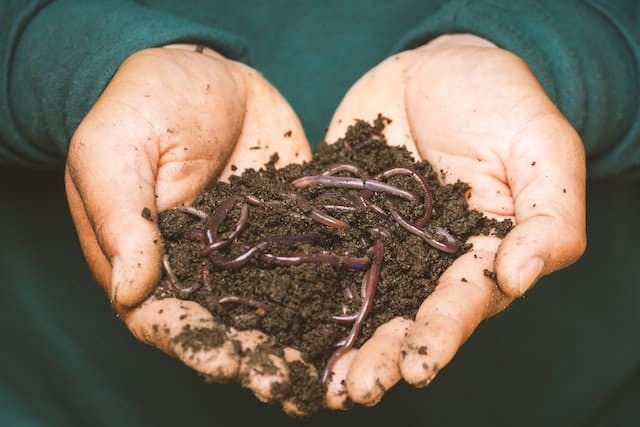
Orchids require certain nutrients to thrive. A lack of certain nutrients can cause orchid leaves to turn brown, as well as other issues like yellow spots/veins, deformed leaves or flowers, and stunted growth.
These nutrients include elements like phosphorus, potassium, magnesium, and phosphate. In order to prevent deficiencies, use balanced fertilizers such as NPK 20-20-20 or other balanced formulas.
Phosphorous
Phosphorus helps plants build and store energy and is vital for encouraging healthy orchid growth. An orchid deficient in phosphorus will have leaves that turn a brownish red color.
Potassium
Potassium deficiencies in an orchid plant will show up as dead tips that are dry and brown/black in color and sometimes spotted.
Magnesium
Magnesium deficiency impacts lower leaves and causes brown tips and streaks in the middle of leaves.
Phosphate
If your orchid does not have enough phosphate, the leaves will become discolored over time. A gin of this is leaves that turn a reddish brown color.
6. Orchid Leaves have Salt Damage
Orchids require specific growing mediums. Using the wrong kind of soil or potting materials can cause leaf damage that include turning brown and drying up before dying. Salt damaged orchids may also show brown or white fertilizer crusts on the soil. This can also be due to overfertilization.
To prevent salt buildup in your orchid pot, make sure you are only fertilizing once a month during the orchid’s dormant season and twice during active growth. Proper dilution of the fertilizer is vital. RInsing the orchid’s potting medium with rainwater or distilled water can help clear out excess salt.
7. Orchid leaves are Infested with Pests
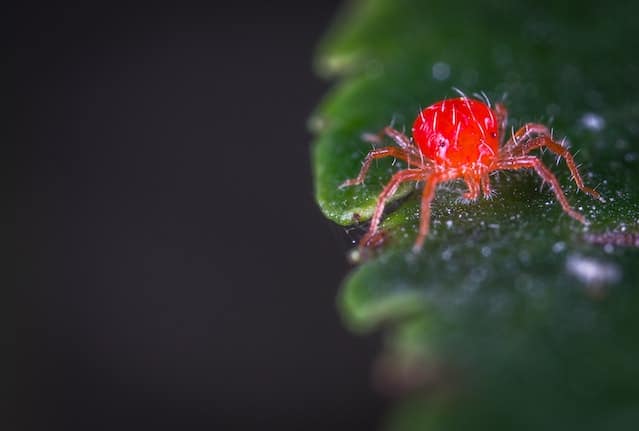
Like any plant, orchids can attract a variety of pests, including aphids, scale insects, whiteflies, and mealybugs. Heavy infestations can cause damage to all parts of the plant.
Brown spots on leaves can indicate mite damage, while underdeveloped or deformed leaves and flowers indicate a problem with aphids, who love to feast on new growth.
Most pests are small but easy to spot. Aphids prefer to attack new growth, so look for them on new stems and leaves.
To treat and prevent pests, many plant lovers opt for insecticide soaps and horticultural oils like neem oil. Others prefer more natural solutions, like vinegar or rubbing alcohol combined with physical removal of the pests with a cotton swab or other instrument like tweezers.
8. Cold damage
Temperature is very important to orchid health. Most orchid varieties require warm temperatures to growth and thrive. In cold climates, it is possible for an orchid to get damaged by extremely cold temperatures. Cold damaged orchid leaves will be limp and eventually turn brown.
In order to avoid cold damage, be sure to maintain the correct indoor temperatures. Remember, orchids are used to warm, wet, tropical climates. The optimal growing temperature of most orchid varieties is 75°F or higher during the day and 65°F during the night.
Conclusion
There are many reasons why orchid leaves might turn brown. The most common reasons include improper potting medium, overwatering or underwatering, root rot, pests, and nutrient deficiencies.
For optimum plant health, be sure to provide your orchid with warm temperatures and humidity, as well as consistent watering and fertilization.
Brown orchid leaves are a sign that your orchid has a problem, but most of these issues can be remedied with time and attention. With proper care, orchids are a great addition to your houseplant collection.

Hey, I’m Lisa and I’ve been an avid gardener for over 30 years. I love writing, talking and living in the garden! Feel free to connect with me on my socials below

